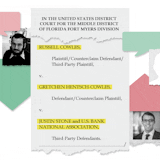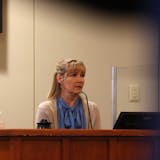Inside the school, Polly Groshens quickly grabbed a small cloth and tied it into a tourniquet.
"We need to stop the bleeding," she said. "Help is coming."
On a recent morning, the trauma expert used a fake limb to show Hastings High School students how to stop a victim from bleeding to death. In the aftermath of the deadly Parkland, Fla., school shooting in February, the training is the first in the Twin Cities, launched this spring by Fairview Health Services.
In an era of increasingly deadly mass shootings, the national program, Stop the Bleed, teaches students, teachers and other bystanders how to act as first responders, in hopes of helping to save someone's life in the critical minutes before paramedics arrive.
"People are just getting used to this being something we need to learn," said Groshens, the clinical director of trauma services for HealthEast, a part of Fairview Health Services.
Hastings is the third metro area school district to hold the free class with Fairview experts. At the 1,400-student high school, all 400 sophomores and about 30 staff members are now trained in the national Stop the Bleed campaign. The idea for the campaign was first conceived by the American College of Surgeons in 2013 after the Sandy Hook Elementary School shooting in Newtown, Conn., that left 26 children and adults dead.
Since then, more than 162,000 people in the U.S., including nearly 1,400 people in Minnesota, have been trained in the program, according to the organization.
Trauma victims often die of blood loss, a fact that suggests student bystanders can play a key role — not just after school shootings but after car accidents or after incidents involving smaller injuries in a shop class or a hockey game, for example. It takes six minutes or less to bleed to death, Groshens told students, and it takes paramedics in the metro area 12 to 15 minutes, on average, to respond.



